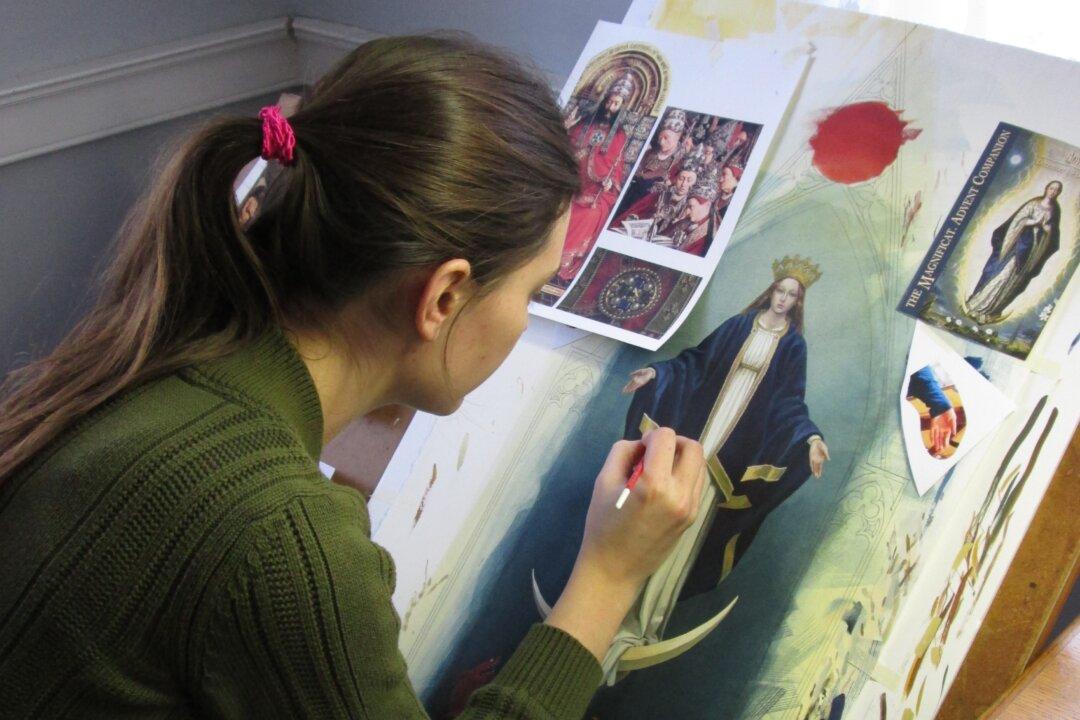San Francisco-based illustrator Bernadette Carstensen paints sacred stories that transcend language. Many of her works have been ecclesiastical commissions. However, it’s a career path that she didn’t intend to take.
Growing up in Circleville, Ohio (25 miles south of Columbus), she had set her heart on becoming a book illustrator. Her parents, both art majors, had filled the family home with exquisite art and books full of adventures illustrated by the likes of English book illustrator Arthur Rackham (1867–1939). These artists brought the stories to life, and she fully intended to follow in their footsteps.






